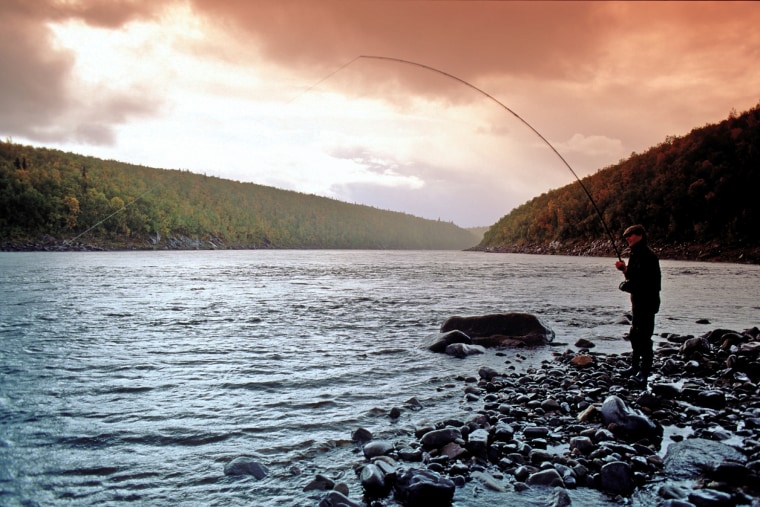While the Bahamas might be known for its spring break pick-up scene, it's also home to another sport: bonefishing.
Often, the best catch can be had along Andros Barrier Reef, a remote labyrinth of small islands, cays and tidal lakes boasting crystal-clear waters in which anglers from across the globe head to cast their reels.
Looking for Atlantic Salmon? Experts say there is no better spot than the Ponoi River, in Russia's Kola Peninsula. Enthusiasts head to an especially fish-rich 42-mile stretch, which is lined with thousands of emerald-green beech trees.
Both are examples of salt- and freshwater spots worldwide offering anglers stunning scenery, unfettered access to pristine waterways and luxurious local accommodations.
"Fly-fishing takes you to beautiful, unspoiled places," says Mollie Fitzgerald, a luxury consultant at Frontiers Travel International in Wexford, Pa. She plans upscale fly-fishing trips and is a fly-fisher herself. "You're in natural settings that usually aren't easy to get to, and you often won't see another person all day long."
Fly-fishing fundamentals
The sport requires no special certification and is relatively easy for novices to pick up. Anglers tie an artificial fly to the end of a rod and cast their reels from a boat or while standing, often knee-deep, in water. The angler relies on the cadence imparted to the rod and line to send the fly to its intended spot.
It's not typical to find different varieties of fish in one area; most regions have just one type. And catches differ greatly in weight. Small-mouth bass, for instance, weigh anywhere from a half a pound to four pounds, while sailfish weigh between 60 and 100 pounds. All are released.
"Fly-fishing is primarily catch-and-release, which means that the fish is immediately released back into the water after it is caught," says John Randolph, editor and publisher of Fly Fisherman magazine. "The sport is more about the art of catching the fish and supports conserving the species."
Canadian catch
For prime freshwater fishing for Pacific salmon, anglers head to the western coast of Canada in British Columbia. The area is reachable by floatplane only and is surrounded by the Great Bear Rainforest, mountain streams and lakes. Here, both Coho salmon, a more elusive fish, and pink salmon, which is found in schools of 400, swim the streams.

Anglers often choose to stay at The King Pacific Lodge, a Rosewood Resort in British Columbia, Canada. The lodge flies guests in a helicopter to spots such as the Kootz River. At day's end, anglers bed down in one of hotel's 17 guest rooms — each has a king-size bed and a deep soaking tub. The grounds also boast hiking trails and streams for kayaking.
Wading in Wyoming
Stateside, fly-fishers seeking trout head to Little Snake River, located on the Colorado/Wyoming border and surrounded by the Sierra Madre Mountains. The area boasts streams stocked with Rainbow, Brown, Brook and Colorado River Cutthroat trout. It's also possible to catch Tiger trout at Godfather and Gold Blossom lakes.
The Three Forks Ranch in Savery, Wyo., offers anglers 15 roomy cabins each with a separate sitting area and fireplace. The ranch also has a spa for fly-fishers eager to mend sore muscles with a massage.
Fly-fishing certainly isn't a cheap hobby. The cost of many three-day to week-long all-inclusive trips can set one back as much as $8,000. The price often includes lodging, eight hours of daily guided fly-fishing and all meals.
